
A Reference Guide for Double Weave
There are a number of challenges for the weaver who encounters the technique called double weave for the first time. The fact that two or more cloth layers can be woven at the same time and that the weaver sees only the top layer while weaving is a bit unnerving. Are there weaving errors occurring in the lower layers that canít be detected until the entire weaving is completed? Well, yes there is always that possibility but frequent examination of the weaving plus the confidence that arises with experience tends to minimize this problem. On the other hand it pays to unweave when an error is discovered because it is much much harder to correct errors after the cloth is removed from the loom.
There are two intimidating aspects of double weave before even beginning to weave a project. First the tieups for double weave look very mysterious and second the traditional drawdown which shows all of the threads in a weaving does not look anything like the results of carrying out double weave on the loom. There are a few weaving programs on the market that are able to print out the true appearance of the two cloth layers but most cannot do this.
After teaching many workshops on double weave and publishing several books on loom controlled double weave, I have tried out many teaching ideas on the workshop participants. Some have proved very useful, some not so useful. This reference book summarizes the basic ideas for 4 or 8 shaft double weave and include the way in which I develop tieups and how to separate these tieups so that drawdowns for the two cloth layers can be obtained.
The purpose is to provide a short reference source for double weave, particularly for those who have left my workshops and need a quick refresher on certain basic points. Above all donít forget the most important aspect of double weave.

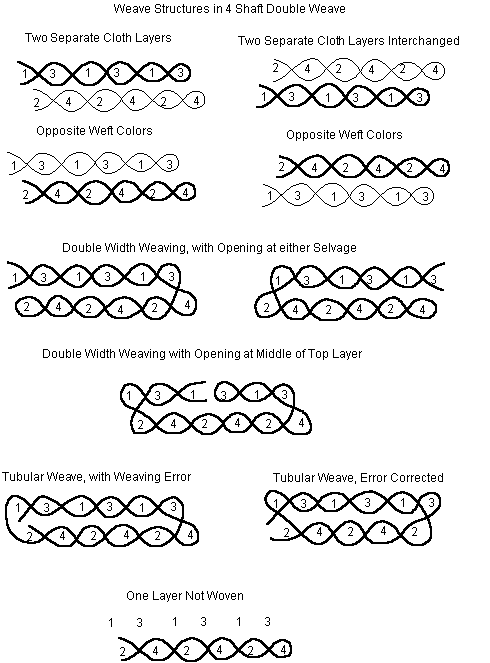
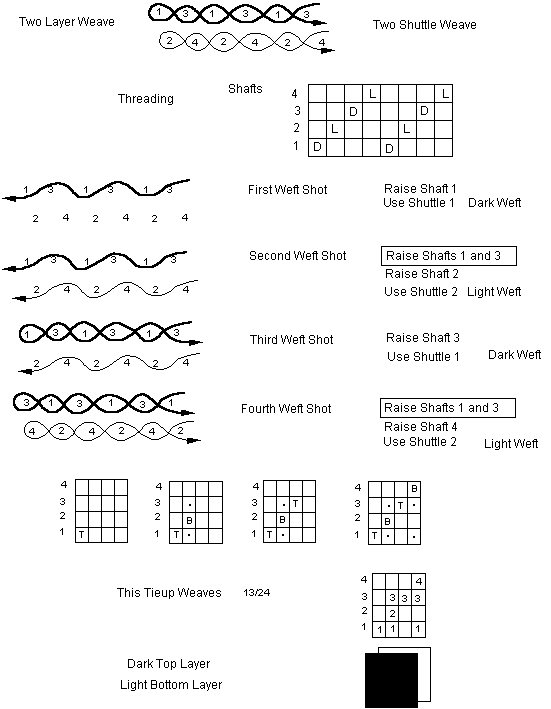
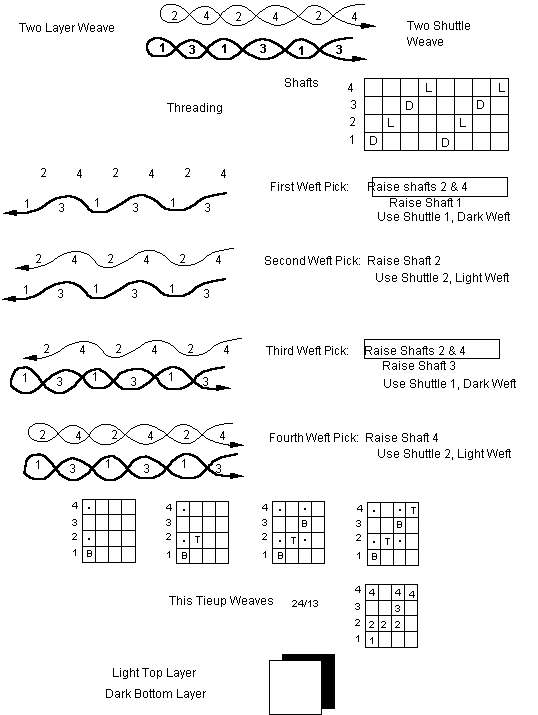
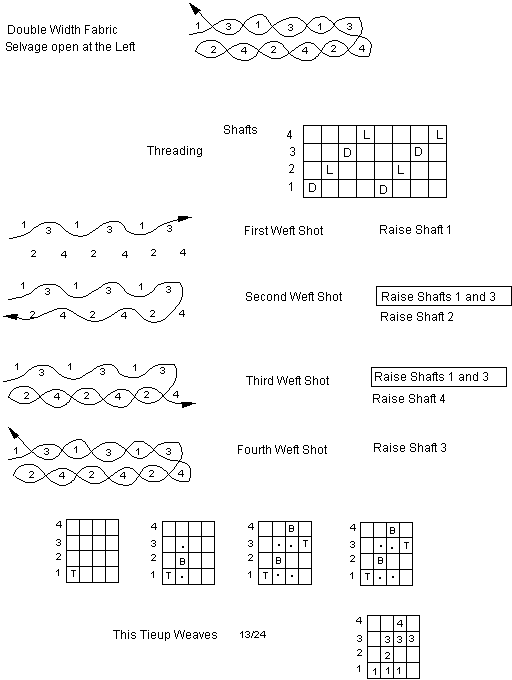
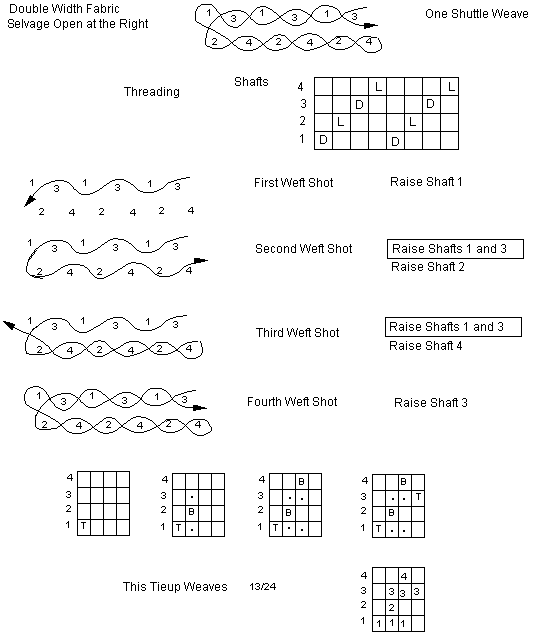
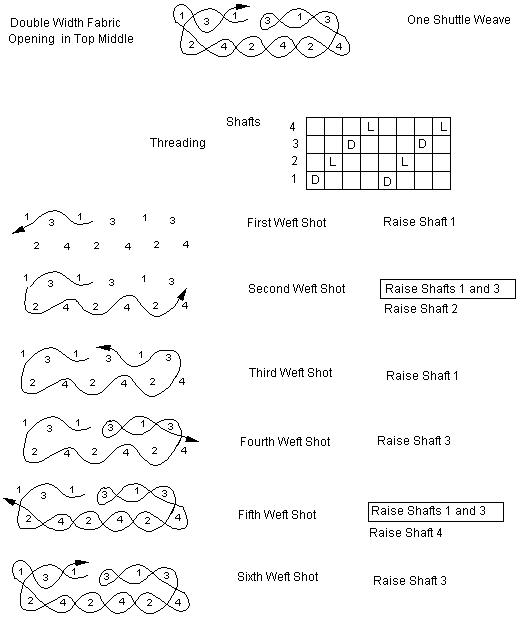
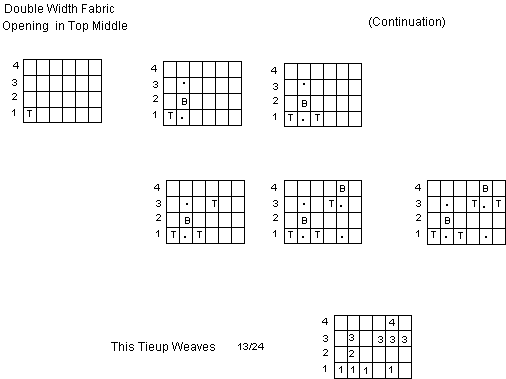
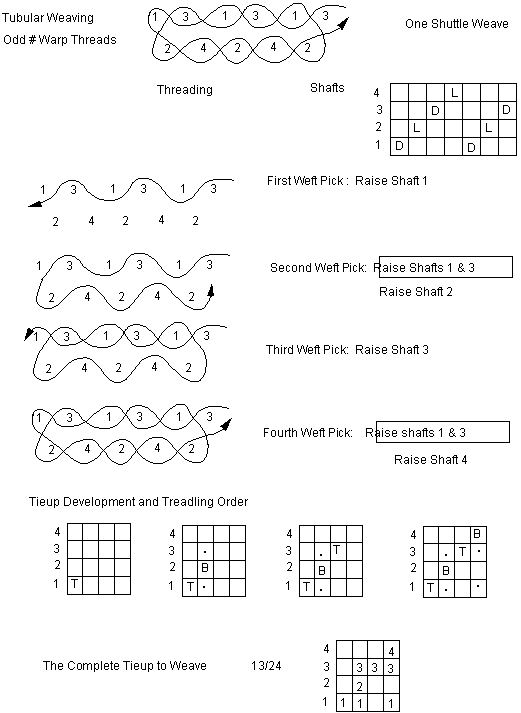
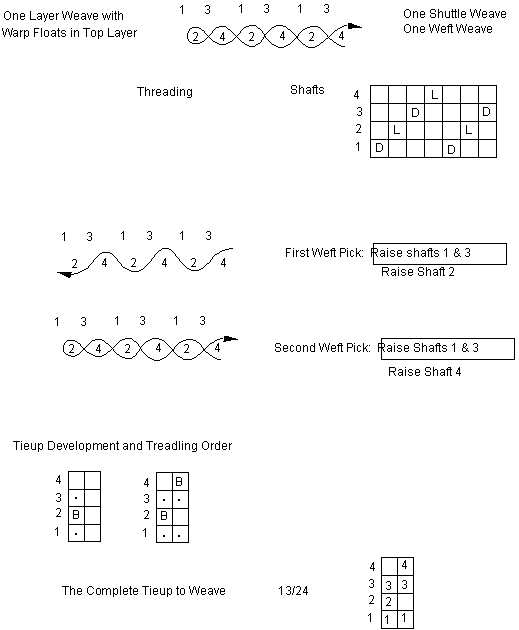
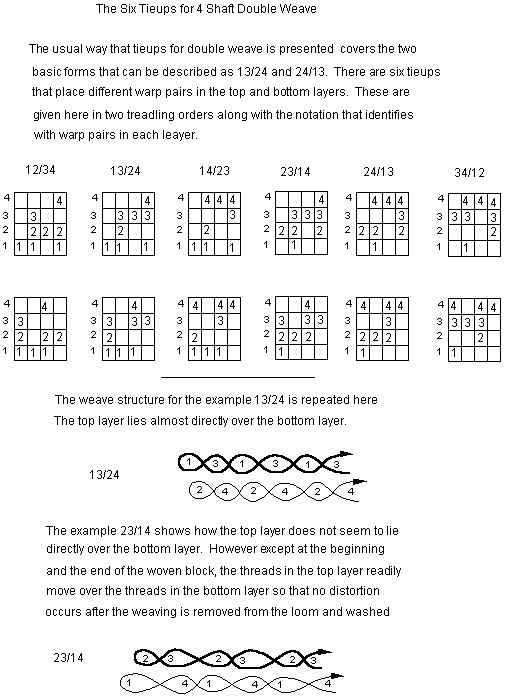
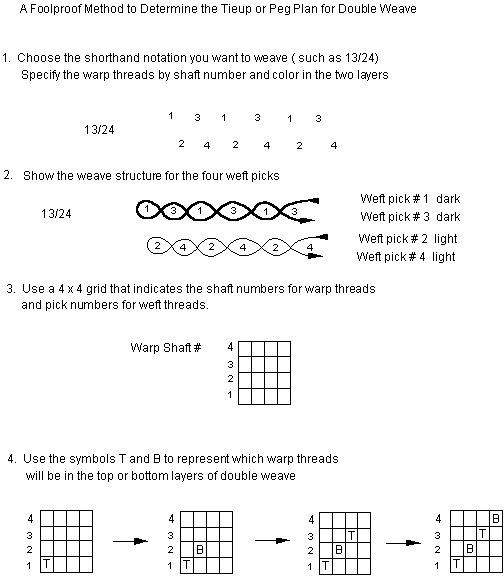
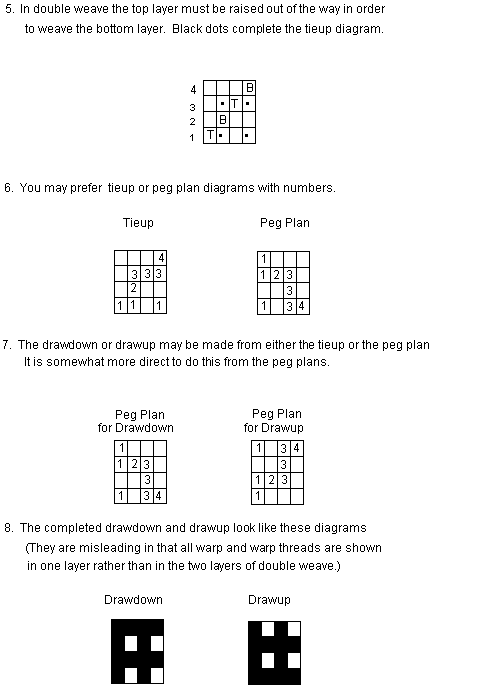
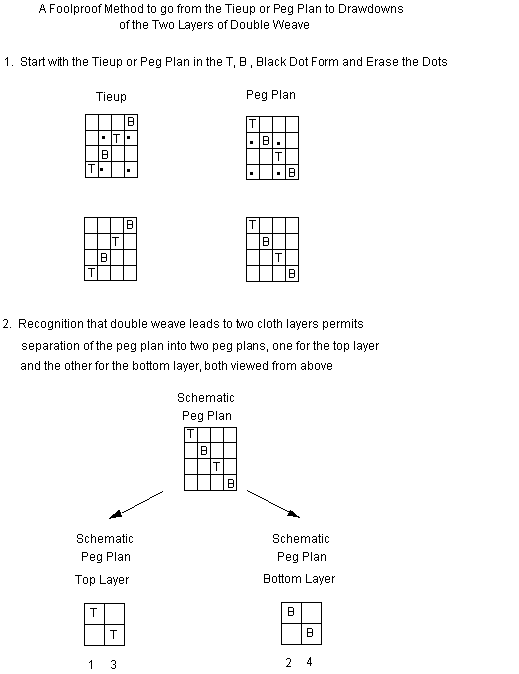
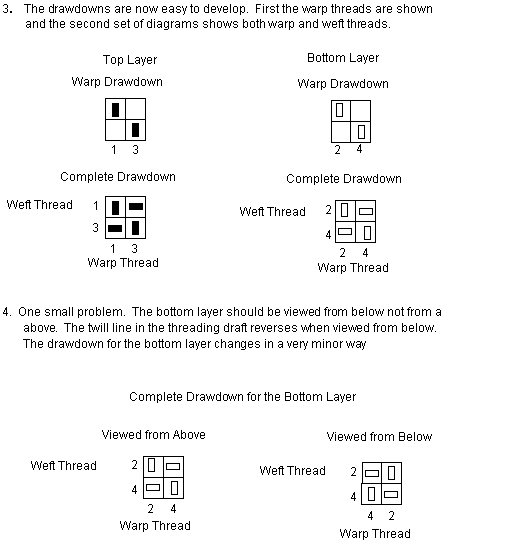
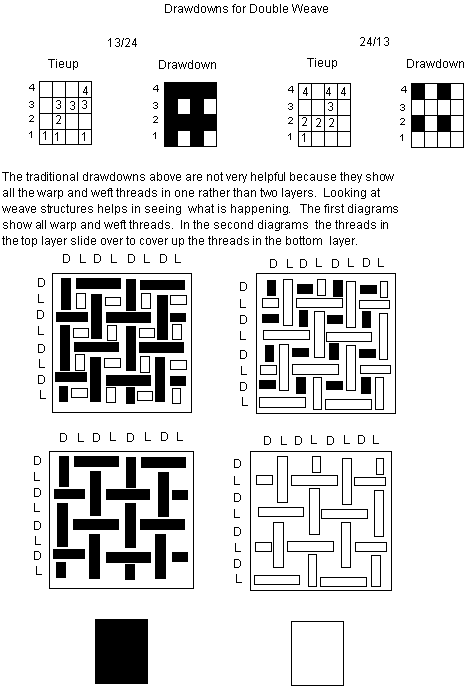
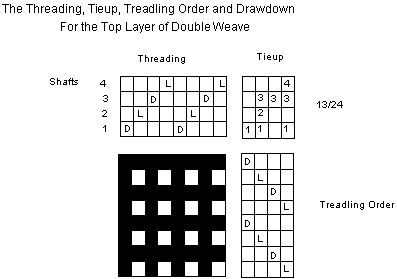

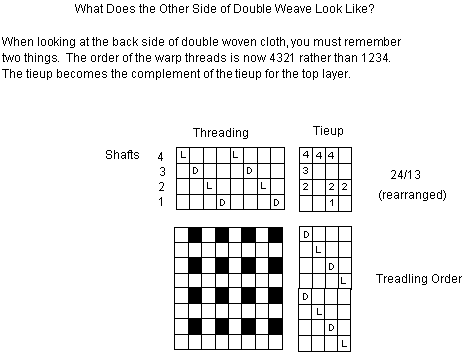

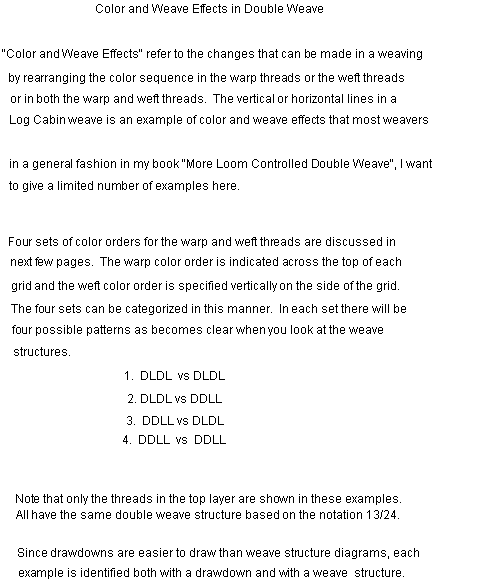
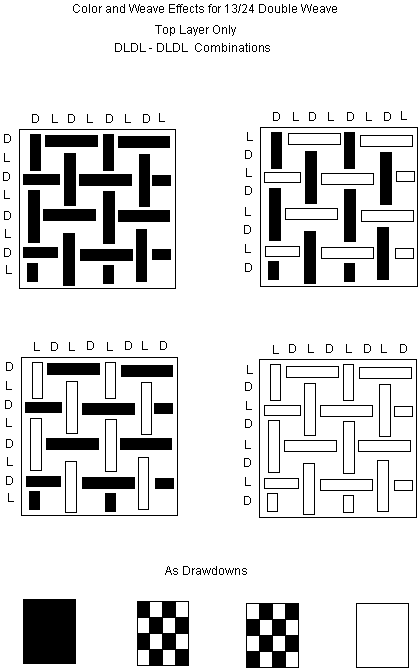
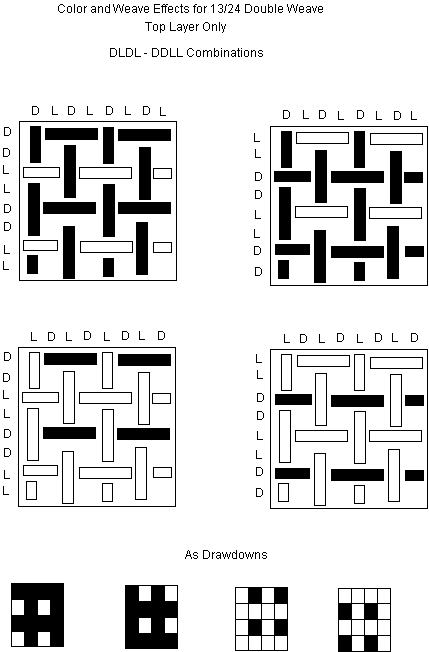
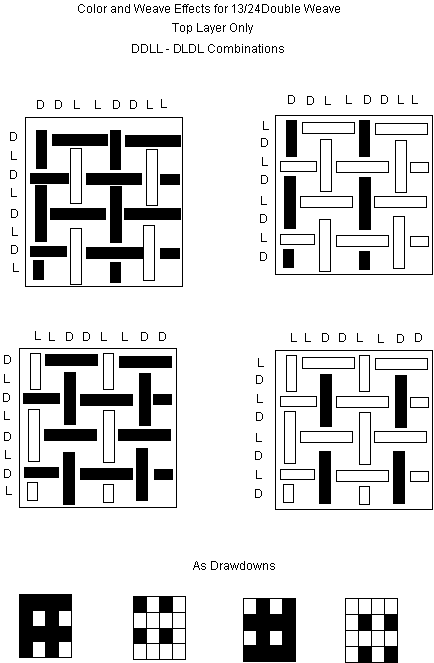
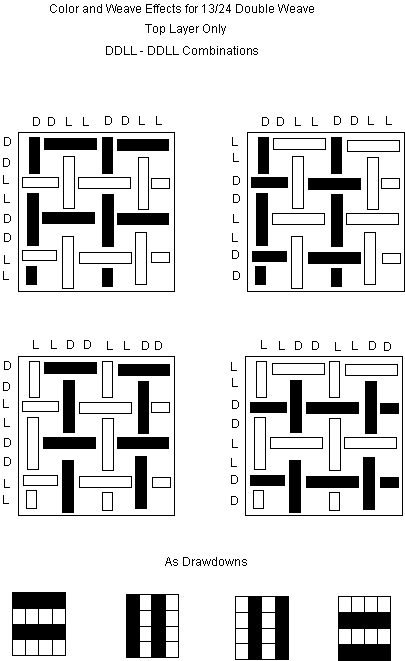
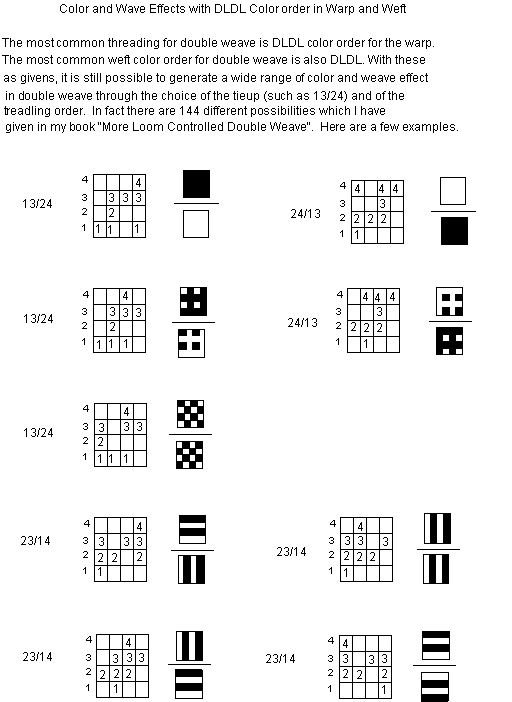

Units and Blocks in Double Weave
When a weaver graduates from a 4 shaft loom to 8 or more shafts, the concepts of units, blocks, and profile draft prove to be very helpful shortcuts in planning designs.
A warp unit is the minimum number of warp threads that will lead to the desired weave structure. That minimum number for double weave is four warp threads, with two warp threads in the top layer and the other two warp threads in the bottom layer. Because of this a 4 shaft loom provides only one weaving unit on shafts 1-4. An 8 shaft loom provides two kinds of weaving units, one on shafts 1-4 and the other on shafts 5-8. Additional shafts provide more units, always in multiples of 4 shafts.
A warp block can be made of as many warp units as the weaver desires. Blocks are usually designated as block A on shafts 1-4, block B on shafts 5-8 and so on. It is important to realize that block A may weave in the same or different fashion from block B.
In a profile draft, a warp unit is indicated by a filled in square. The warp block then consists of the appropriate number of unit squares. The designs for the two important 8 shaft double weave designs called "windows" or "checkerboards" appear like this as profile drafts. The warp units labeled A are on shafts 1-4 and the warp units labeled B are on shafts 5-8.

*There can be 4 or 8 blocks of double weave with an 8 shaft loom. There are only 2 blocks in traditional double weave and the other blocks are in integrated double weave.

 q
q
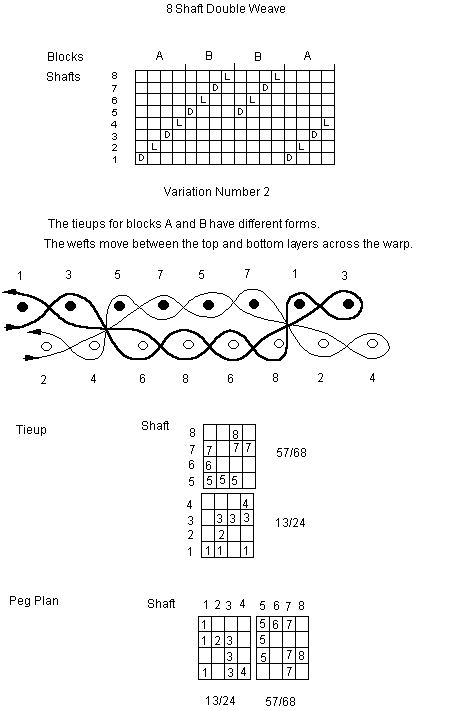
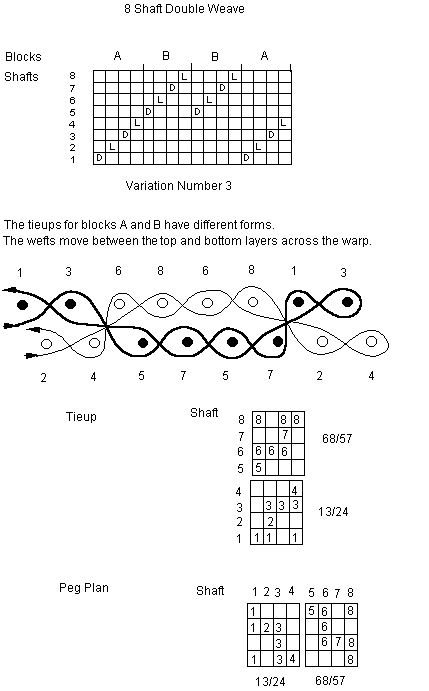
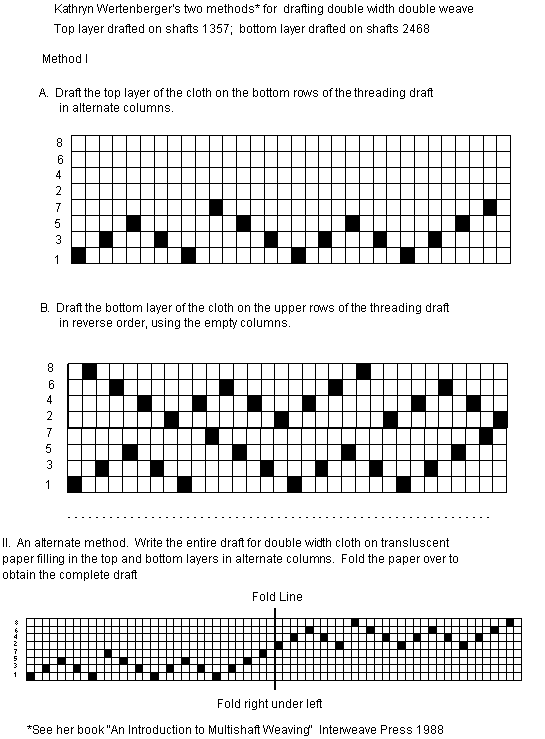
Some Thoughts on Color and Design in Double Weave
One of the mysteries and delights of double weave is the way in which warp and weft threads may be made to disappear abruptly only to reappear at a later point in the weaving. Of course they donít disappear. Instead they move from the top layer of weaving to the bottom layer. As one becomes familiar with double weave, the number of choices for color and for design expand. In essence there are two warps which can be interchanged from the top layer to the bottom and back again. At the same time there are two wefts that can be in the top or the bottom layer and even move from top to bottom and back again in the same weft shot if your loom has 8 or more shafts.
A few of many design and color choices are discussed here. It is a challenge indeed to balance the many possibilities in order to achieve a well designed fabric.
A. Two Color Warps for 4 Shaft Looms
The planning of any weaving starts with the warp threading.
Threading I Threading II

These threadings differ only slightly but indicate two ways that you might choose to warp your loom. The letters A,B,C... will be used rather than DLDL to suggest that a wide range of colors could be used in the warp. A special aspect of double weave is that the weaver can choose any of the six warp pairs to be in the top layer (and the complementary pair will be in the bottom layer). Here is a chart to show those six choices and what this means for threading I and for threading II.
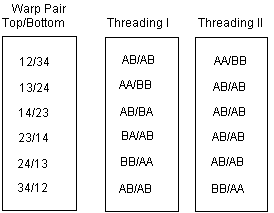
When the weft threads are limited to the two colors A and B, the color of the two layers of double weave can be predicted as shown in the next chart. Remember you can plan whatever color you want for the top layer and for the bottom layer independently.
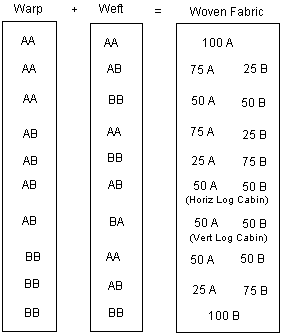
When you change from one warp color pair to another, the two cloth layers of double weave are locked together into a single fabric. The basic design for 4 shaft double weave is a series of horizontal bands which can be the same or varying in width. When a weft color such as C is used rather than A or B, the color possibilities multiply rapidly.
Some additional threadings for 4 shaft looms include these.

Reversal of the threading from ABAB to BABA means that the two halves of each layer could be different in appearance. For example with weft color A, the left half could be all A while the right half could be half A, half B. Or with weft colors AB, the left half could be vertical log cabin lines while the right half could be horizontal log cabin lines. With a weft color such as C, the left half could be a color blend of A and C while the right half could be a color blend of B and C. Choices, many choices.

Notice the introduction of a third color in the warp. This gives rise to weaving a stripe or a plaid in one of the layers of double weave with a solid color warp for the other side.

This threading can be used for a stripe or a plaid design for each layer of double weave. The two sides could have the same or different widths for the stripes. This becomes possible by combining features of the last two threadings.
B. Four Color Warps for 4 Shaft Looms
The first threading that will be discussed is this one.

As was true for the two color examples, there are six warp color pairs that can be chosen for the top layer of 4 shaft double weave. Now however the six pairs are different from each other. Here is a chart that shows what the choices can be.
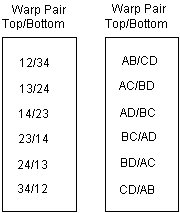
You may not want to use all six color combinations in the same weaviong. Or perhaps some of the warp color pairs may not be as attractive as the others. Wind sample warps. Wind each of the six color pairs and see if you like the results. This is important because once the warp is on the loom, thatís what you have to work with.
Two more threadings that use four colors in the warp are given without further discussion. Ideas presented in these two sections suggest the wide number of possibilities in double weave both in color and in design. A challenge indeed.
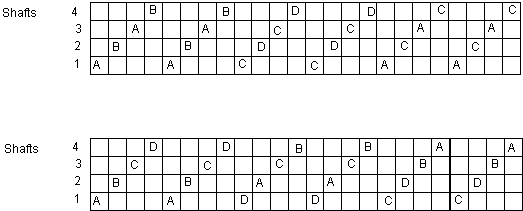
C. Designs for 8 Shaft Looms. Two Block Designs.
With an 8 shaft loom, two blocks become available for designs because 4 shafts are required for weaving one block of double weave. There are two principal designs for 8 shaft looms presented here. One I think of as the "windows" design and the other as the "checkerboard" design. Here are the threadings and the tieups to weave each type of design. Remember of course that the windows can be wide or narrow; short or tall. Similarly the checkerboard can be regular or irregular in either the warp or the weft direction.
1. The Windows Design. Threading, Tieup, Treadling and Drawdown.
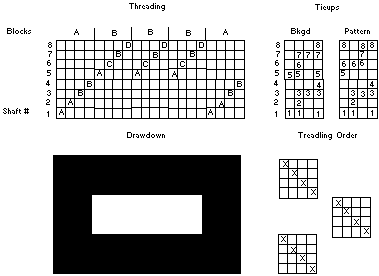
Notice that the threading for this design requires the same color warp threads be used on shafts 1 and 3 and shafts 5 and 7 in order to weave the background across the warp. The threads on shafts 6 and 8 may be different to create a contrast in warp color for the window portion of the design. (In this example the tieups correspond to the choices of 13/24 and 57/68 for the background and 13/24 and 68/57 for the window pattern. Also the threads on shafts 2 and 4 do not have to be the same as the threads on shafts 1 and 3. For reasons of simplicity, they are the same in this example.)
I have often combined units of this basic design to have 3, 5 or 7 windows in a horizontal array across the warp. In some instances the background area continues the two colors A and B throughout the warp. In others each window area is on a separate background color such as (AA BA BB) or (AA BA BB CB CC AC AA). Remember that any of the six warp color pairs can be used in the window area giving a wide range of color possibilities. I usually find it advisable to use a single color for the weft in the background area throughout the weaving to provide the unity of a border. The range for the weft color in the pattern or window regions is much greater and can be changed throughout the weaving.
2. The Checkerboard Design. Threading, Tieup, Treadling, and Drawdown.
The other basic design for 8 shaft double weave is the checkerboard. This is a much more challenging design because the choices of colors in the warp and weft are much greater in number. To achieve an overall sense of unity and balance with an exciting color scheme is not easy.
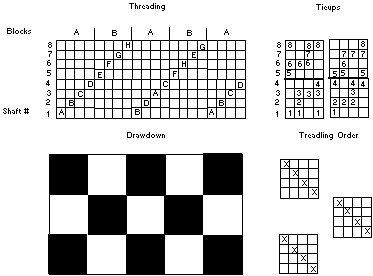
Suppose we stay with D and L for the two colors in this weaving. It is easy to see that the warp blocks A and B can be either D or L in the top layer (and L or D in the bottom layer. The next diagram shows the four choices for the behavior of the warp. The warp threads in blocks A and block B could be all dark in the top layer, all light in the top layer, or dark for one block and light for the other block.
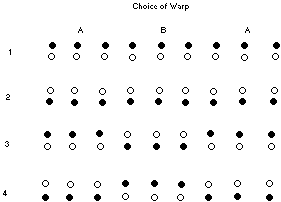
There are four choices about the paths the weft threads follow. They can be in the top layer, the bottom layer, or go from one layer to the other. Here are the choices.
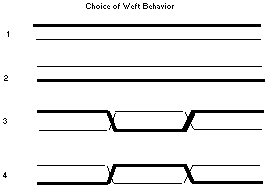
4 x 4 means 16 different final designs!
When colors A,B,C.... are used in a checkerboard design, the problems multiply. Now each square will be surrounded by other colored squares. The way in which neighboring colors can influence each other is well known so the development of a large checkerboard design where many different colors are used in the warp and the weft tests any weaverís ability. I strongly recommend that you examine carefully the 8 shaft weavings of Richard Landis which can be see in the two books by Ruth Constantine and Jack Lenore Larsen "Beyond Craft: the Art Fabric" and "The Art Fabric: Mainstream" . Also the double weaves of Annie Albers are a source of inspiration.